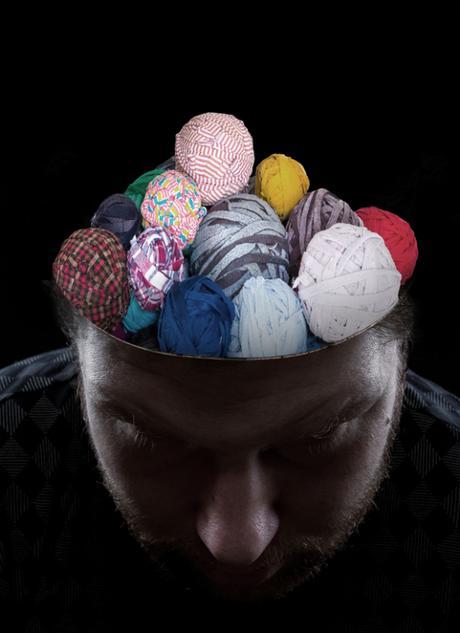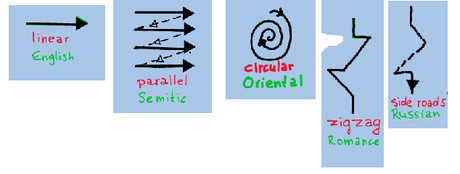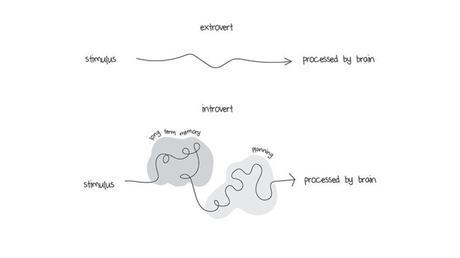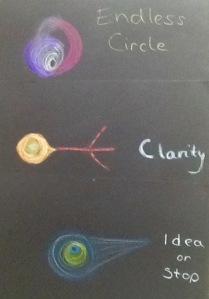The other day I was watching a picture that was filmed on an island where I used to spend my summer holidays. Familiar names and places that I have not thought about for years suddenly competed with the attention that following the picture demanded. Flashbacks from the memory of delicious ice-creams, the cold water, and boat trips were mixed with scenes from the picture. Suddenly my thoughts were all over the place. And to further add to the swirling thoughts, an idea for a blog post also emerged!
- What if it was possible to map the thinking that took places while I was watching the film?
- What could I learn about myself?
- Could this sketch be useful for anything else?
One way of exploring our thinking is to look inside the brain. What if our head was transparent? Could this help me to make a sketch? What would we see if our head was transparent? Macropinna microstoma is a deep-sea fish with a transparent head. Although this interesting, there are few clues about the way the fish interprets the world.
Today, several different tools have been developed to visualise the world. Mind mapping and info graphs are often used to display information. Yet mind mapping can also be used as a tool to organize the underlying thinking that is needed to make the mind map. Go here to read more about this approach which was developed as a way not only to help children think but also to fulfill a dream about actually mapping and sketching the thinking.

Young man with balls of threads instead of his brain
The brain is a complex and marvelous thing, and tracing just one single thought from beginning to end is indeed a complex task. External stimuli trigger a series of signals in the brain. Yet a thought is an action and we need to look at ways that we interact with the world.
If we leave the word of neurons and instead look at more concrete aspects of our thinking what do we find?
Is everyone thinking in a similar way?
Or are there differences between different approaches to thinking, for example, differences between sketching a critical approach to thinking vs a lateral approach.
Does different cultures have different approaches that would result in different sketches?
Differences between different personality dimensions, for example, between introverts and extroverts.

Illustration: Liz Fosslien and Mollie West
We are now seraching for patterns instead of looking at a direct way to sketch the thinking. Dividing the world into groups is a dubious business and it is indeed difficult to draw lines and to exactly categorise things into a box. My thinking and indeed a sketch of my thinking would look different depending on the situation. In some situations, I would rely upon my long-term memory while indeed at other times I would just take in whatever the world is throwing at me.
There is a strong and understandable desire to group and to categorise things. Yet it is important to remember that groups are not fixed. The same it true when you are looking for patterns in people’s thinking. Sketching left vs right brain thinking or the way introvert vs extrovert thinks may teach us something about thinking in general but to dig deeper we also need to learn to sketch our thinking in new ways. The thinking on Monday is not necessarily similar to Tuesday thinking.
Like many things, focusing the attention on things is a great start. Capturing the thoughts and making a quick sketch every now and then may help us to become more aware. Ultimately the goal is of developing thinking tools and understading of our own thinking to help us explore the world in the best possible way, to invent new exciting things, and to solve problems.

![Can You Map Your Thinking? FullSizeRender[1]](https://m5.paperblog.com/i/143/1434251/can-you-map-your-thinking-L-REPWIa.jpeg)
Inspiration for the sketches came from the Blue Brain project as well as a walk in the woods where I tried to capture my thoughts and at the same time trying to figure out how I would like them to be captured, i.e. what media would I like to use?
What would your personal sketch of a thinking situation look like?
The overall aim of the Blue Brain Project is to build a human brain. This project relies on supercomputer-based reconstructions and simulations in the hope to explore and further enhance our understanding of how our brain works. In the last video, you can see and hear a reconstruction and simulation of neocortical microcircuitry.
